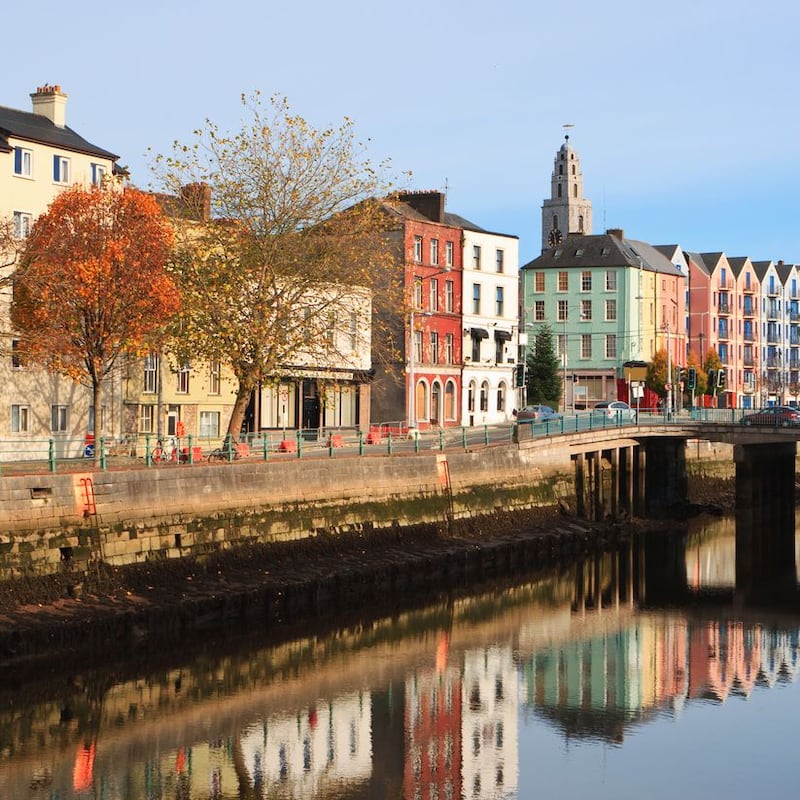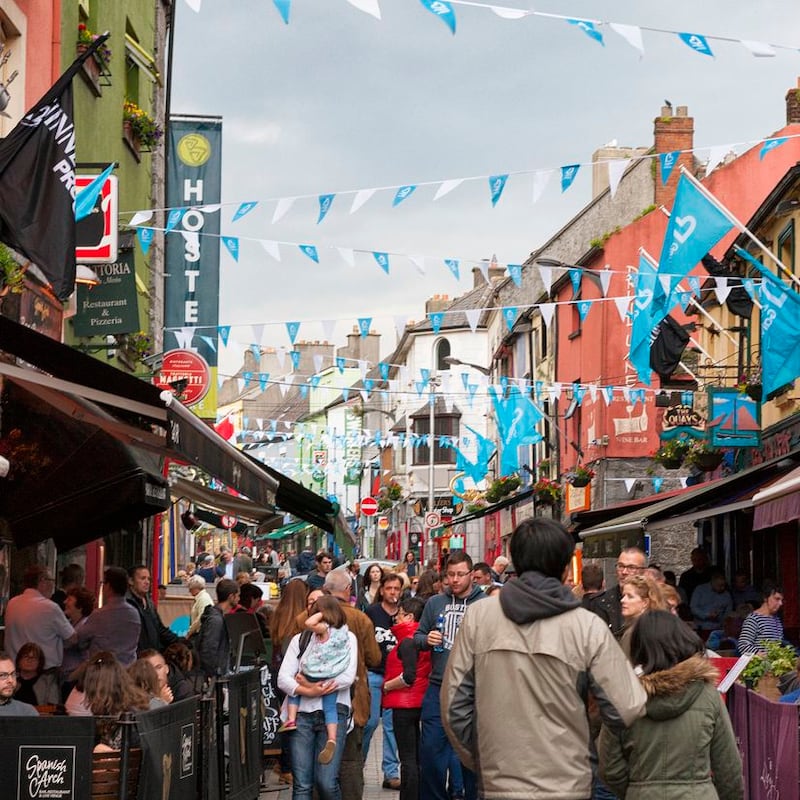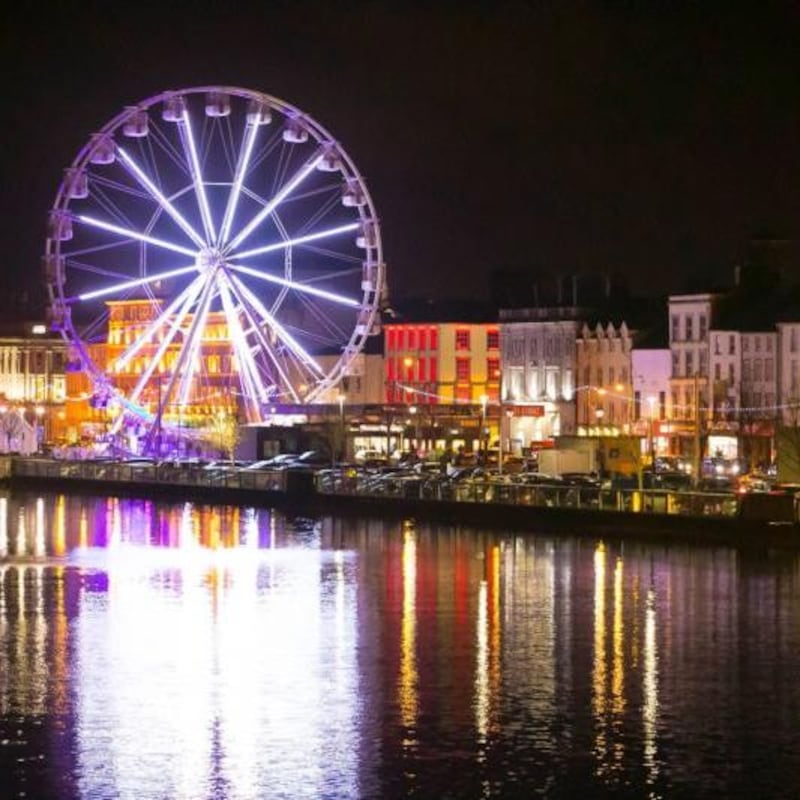Compact growth with denser housing is Government policy – and by extension that should entail a move to establishing “15-minute cities”. Cities where access to education, amenities, green spaces is just minutes away by walking or cycling is the ultimate in convenience, where need of a car is greatly diminished.
The 15-minute city is far from Shangri-La for a fringe group of urban architects. It is increasingly regarded as the key lever to sustainable urban spaces. It is reality in a growing number of European cities.
Yet most proposed Irish developments with denser accommodation end up in court; more than 90 per cent of them get shot down in judicial reviews.

For so long we have been developing cities in a mono-functional way
Tying the concept into overhaul of public transport is considered critical to solving the climate and biodiversity threats to the world – but the risk is Ireland’s deplorable history of poor planning, which makes people fearful when it comes to denser development.
A recent report by Hassell, the international architecture, design and urban planning practice, details how the concept could be rolled out in Ireland but, significantly, also captures current public attitudes embracing a contrasting mix of strong support for reimagining urbanscapes and tangible concern about anything suggesting increasing density.
Key questions are: Are we facing into a new era of compact and easier living or is it destined to flounder? If there is broad support – and on balance Hassell says there is – how can it be progressed?
Core principles
Paris-based academic Carlos Moreno, who is credited with coining the term 15-minute city, believes it’s vital for the future of humanity. If we want to achieve carbon neutrality by 2050, we need technical solutions – including EVs, building with new materials etc – but also “to radically change our urban lifestyle”.
In a 15-minute city, neighbourhoods have easy access to goods and services, particularly groceries, fresh food and healthcare. They also have a variety of housing types, of different sizes and levels of affordability, to accommodate many types of households and enable more people to live closer to where they work. Residents are able to breathe clean air and there are green spaces for everyone to enjoy – equality of access is critical.
The Close to Home report was commissioned by Irish Institutional Property (IIP), which represents institutionally financed investors in the Irish real estate market. It is unequivocal on the potential for 15-minute living to be scaled up in Ireland, though it acknowledges significant public resistance.
While the 15-minute neighbourhood complements current Government policy advocating more dense urban development, compact growth is one of the national strategic objectives in the National Planning Framework – it concludes that “more informed public understanding of the positive benefits of compact growth is necessary to build and sustain public support for this concept”.

A linked YouGov poll of more than 1,000 people found a third of respondents would like to be able to access every essential type of amenity within a 15-minute walk from home but that only 10 per cent can at present. Younger people are more supportive of compact urbanism than older age groups.
“The challenge for decision-makers is to deal with upfront cost and cultural barriers to creating compact, amenity-rich neighbourhoods”, the report says, while the transition has to be led by the public sector to ensure equity of access to nearby amenities.
Prof Niamh Moore Cherry of the UCD School of Geography collaborated on the research. She says the compact growth era is imminent. “For so long we have been developing cities in a mono-functional way,” she believes; the traditional mix of large-scale suburban housing estates and big business parks, whereas compact growth is going back to the roots of both urban development and planning.
It’s the opposite to “doughnut cities”, in which shopping centres and housing estates are built on the outskirts, and road infrastructure is repositioned and constructed accordingly. This failed approach results in fewer people living in centres, city centre shops and businesses losing customers and dying city centres. “The 15-minute city is about trying to fill in the doughnut,” Moore Cherry explains.
Ironically, she believes beginning in the suburbs "and working your way into the city centre" while balancing up development would be the best course. In the capital, it will require "quite a lot of courage on the part of Dublin City Council [DCC]" in overseeing not only commercial development but also provision of services and amenities.
Education is particularly challenging, she notes, whereas in other European cities this is under the remit of local authorities who have a lot more powers than DCC.
The starting point should be putting in place rigorous planning that is more demanding on developers in going beyond narrow requirements
Places that could be showcase areas, she suggests, include Ranelagh – though it has affordability issues – Ballinteer-Dundrum and City Edge near the Naas Road, one of Europe's largest urban regeneration projects which is being developed by DCC and South Dublin County Council.
Ali Grehan, a city architect with Dublin City Council contends that Tallaght, Dún Laoghaire and Swords have 15-minute attributes, and agrees that “if we want to pursue it we have to make it visible, and identify parts of Dublin or other places that qualify, and why”.
The national compact growth agenda has been adopted in local development plans, and there is substantial land to develop, says IIP chief executive Pat Farrell. But with much higher construction costs for higher density developments relative to lower density developments and a negative public view on compactness, “the reality has yet to catch up with the vision”.
The Government has reaffirmed commitment to compact growth and that requires local authorities to facilitate “high-density apartment living” in cities. Yet sometimes when these applications are lodged, opposition is often led by politicians, including some from parties advocating compact development.
The report highlights the need to transcend short-term political gain in favour of long-term, sustainable plans, while building mutual trust between citizens, public authorities, and the private sector.
A 15-minute city 'doesn't mean living on top of each other in a concrete jungle'; it's about preserving land with less air pollution and more sustainability
“It’s people first ... because without the buy-in of communities and of local groups this agenda will never grow legs,” Moore Cherry insists. Governments have been supporting urban regeneration, she accepts, but that has been largely confined to housing and office blocks/places to work when it should be more about living communities.
“We have a history of planning in Ireland that’s not the most glowing, perhaps,” she suggests, "which feeds a lot of objections to the idea of compact growth.” Improving liveability depends on the right policy decisions and turning the planning system on its head with the public sector leading the private sector.
“Ireland’s population is set to increase by one million people over the next 20 years. By focusing this growth on the five Irish cities and placing people at the centre of planning, there is every opportunity to catalyse an urban revival that could also help meet the country’s wider social and environmental needs,” Hassell researcher Camilla Siggaard Andersen said at a briefing.
A 15-minute city “doesn’t mean living on top of each other in a concrete jungle”; it’s about preserving land with less air pollution and more sustainability.
The report spells out a wide range of proven interventions to act as enablers, including buildings, spatial planning, active travel and trees as infrastructure.
There are also personal lifestyle choice and trade-offs to be negotiated; the obvious being between living in walkable versus car-centric places; renting in amenity-rich places versus owning in amenity-poor places, and apartments with great access versus houses with limited access. Attitudes to sharing facilities, spaces and vehicles also arise.
Irish contradiction
Ireland has “incredible nature and love of outdoors”, yet there is “cavalier use of open space with continuing urban sprawl”, Siggaard Andersen says. Despite this, it has a unique opportunity to transform its cityscapes.
While municipalities initially respond by saying “that won’t work here”, an inclusive approach could overcome reluctance, she said. To make it work, “it has to be more sustainable and the convenient choice, with design for enjoyment” – beginning with a conversation asking people what they would like to experience in their areas.
The starting point, Moore Cherry says, should be putting in place rigorous planning that is more demanding on developers in going beyond narrow requirements; especially with large-scale developments. Essentially, “it’s about the amenities that are there and bringing back social justice in planning”.
Grehan notes that Dublin City Development Plan is “macro”, whereas pursuing the 15-minute city needs “specific, measurable actions” if reality is to be put on the bones of the concept. Overall, it needs an innovation mindset that plans a course rather than saying “that would be nice to do”.
Equally, the reality of people being afraid of the concept has to be faced up to and addressed, as they see current realities where, for example, the densest parts of Dublin suffer most from litter. Then the prospect of making cities more attractive has a much better chance of success, where they are no longer stagnant places “but dynamic and always on the move”.
Sustainable compact urban development is by far the best option in minimising further adverse environmental impact from human activities.
How 15-minute city living could work in 5 Irish cities
Despite a legacy of poor planning and stagnation, Irish cities have an opportunity to return to their “15-minute” roots. Is it outlandish to think Dublin could soon become more like Copenhagen, and Cork might assume the qualities of Oslo? In spite of decades of poor planning, such possibilities in the form of lived-in vibrant cities with ease of movement and ready access to amenities are realisable, the Close to Home report by Hassell found.
The State’s priority now is towards a more sustainable compact urban form, placing cities as drivers of Ireland’s future. The core action complementing this is creating more compact, walkable neighbourhoods of more than 5,000 people/sq km.
Galway is least dense with 5 per cent of people in places with more than 5,000 persons/sq km; Dublin is at 39 per cent, ie the proportion living in areas meeting minimum density requirements to support amenity richness and walkability – considerably lower than trailblazing cities.
All five Irish cities are strategically located close to key natural amenities such as rivers and coasts, though their potential as “blue and green infrastructure” is largely untapped.
Contrary to what might be expected, Prof Niamh Moore Cherry, a specialist in geographical inequalities, suggests it might be easier to develop the 15-minute concept initially in one of our smaller cities, such as Waterford, because of “its built form at the moment”, including its quays and sites suitable for development. This would then become “the template model where people see the benefits”.
The Hassell report provides detailed assessments of each city. In summary:

Dublin
The capital's extensive footprint is a product of 20th-century suburbanisation, developed hand-in-hand with the car-dependence of residents. For decades, new neighbourhoods have been built from scratch on the city's constantly expanding fringes, making poor use of greenfield land and often lacking services and infrastructure.
Since the 1990s Dublin has attempted to develop a more compact urban form again, with the Docklands and Smithfield demonstrating potential for intensification and city centre repopulation.
Quality and affordability of homes in the city centre is lacking, making it virtually impossible for many to choose a more sustainable, compact, high-quality city lifestyle.
The city centre is a perfectly walkable 15-minute neighbourhood, with characterful streets and a variety of community amenities. “Younger people are much more likely to choose city and car-free living in future, and these new residents (and workers) will help moves in a more sustainable direction."

Cork
By building new compact places on central former industrial sites, "the city is helping to catalyse a full urban revival" and is well suited to becoming a 15-minute neighbourhood.
But there’s “a lot of empty and vacant urban fabric”, adversely impacting the pedestrian experience and fuelling car-dependency. Public transport infrastructure is under-developed in relation to scale of ambition for population growth. The city has a strong appetite for urban development, but struggles to attract investment.
There is significant opportunity to densify parts of the city centre, notably the south docklands if appropriate infrastructure is put in place.
Cork’s location on the river Lee and close to the sea is a great natural amenity that should be integrated with urban living.

Galway
Galway has developed around a characterful, walkable, historic centre with strong connections to the sea and river. It must reduce through-traffic and increase the city centre's residential population.
One in three people cannot walk to a supermarket within 15 minutes. With no recently built examples to showcase benefits of compact urban living, new neighbourhoods may struggle to surpass existing negative perceptions.
Galway’s coastal location makes it vulnerable to climate disruption and flooding. “A combined green/blue strategy will help to both enhance the city’s public realm and make the city more resilient for the future.”
Its city centre is a natural 15-minute neighbourhood, “with easy access to culture and nature, and distinctive, human-scale streets”. With strong population growth by 2040, it will have a much-needed population base for building new sustainable mixed use high-quality neighbourhoods.

Limerick
The city centre is relatively compact with good key amenities, which would benefit from development of old industrial sites – making it a more enjoyable and sustainable as place to live and visit.
The historic city centre was once a thriving 15-minute city, now struggling to recover from a century of suburban, car-centric development. “Public transport and walking/cycling amenities are lacking in quality and scope.”
Given its recent history of regeneration, high levels of public sector expertise exist for driving development and working collaboratively. Opportunities exist for creation of new exemplar 15-minute communities in areas such as Colbert Station Quarter, providing affordable housing and short commuting times.

Waterford
With an urban population of more than 50,000, Waterford could be a small and thriving compact city with both the city and nature in close reach. Greatest potential exists by the river front. The city is almost exclusively located south of the river Suir but struggles with high car-dependency, creating challenges for reclamation of public space for public activities.
Waterford North Quays has strategic development zone status, streamlining the planning process and providing a clear framework for sustainable development. Significant brownfield land ripe for development lies close to the centre; which could be used to increase residential population and amenity provision.










